Unlock the secrets to a flawless fit. Learn how to accurately measure your body for tango blouses, skirts, dresses,...

Men's Tango Trousers: The Essential Guide for an Impeccable First Impression and Fluid Movement
Introduction: Why Trousers Matter in Tango?
Choosing the right trousers for tango isn't just a matter of style. It's a decision that influences how you move, how you feel, and what you convey to your partners and the audience. When a man steps onto the dance floor, his trousers speak for him: about confidence, taste, and attention to detail. From the very first glance at a step until the last chords fade, a well-chosen pair of trousers can give you that indefinable "something" that's easy to notice.
In social tango, especially in classical milongas, the dress code isn't just a formality. It's a silent language of belonging, of respect for tradition and your partner. And even if styles evolve – from classic to neo-tango, from fine wool to expressive jeans – it remains essential that your trousers aren't just an item of clothing, but a natural extension of your dance. This means: freedom of movement, a cut designed specifically for ample steps, and pure elegance.
And there's more: for some men, tango comes with a unique dressing challenge. Not everyone is used to choosing clothes for dance. Often, the questions we get at Tangonaut are among the most charming: "How many centimeters should the cuff be so I don't look like I'm coming from football?", "Can I dance in cargo pants or will I look like a fisherman?", "If I'm 1.90m tall, should I still get a flared cut or risk the 'umbrella effect'?" This guide, therefore, comes to your aid with answers, examples, comparisons, and direct recommendations from our store – all so you can build your tango wardrobe with style, ease, and a touch of humor.
In the vibrant and passionate world of tango, every detail counts. From the music to the abrazo, to the impeccable steps, everything contributes to the magic on the dance floor. And, although often overlooked, trousers are a fundamental element of a male tango dancer's attire. It's not just about aesthetics; it's about comfort, freedom of movement, and, ultimately, the impact you have on your partner and the audience.
A pair of the right trousers isn't just a garment; it's an extension of your body, a second skin that allows you to express yourself fully. A poorly chosen pair, on the other hand, can hinder you, spoil your elegant line, or even undermine your confidence. This guide will help you understand why trousers are so important and how to choose the perfect pair to shine on the dance floor.
Table of Contents
- Introduction
-
- The Role of Tango Trousers: More Than Just a Garment
- Context Matters: Practice Trousers vs. Milonga Trousers
- The Cut: From Pleats to Perfect Drape
- Length and Hem: The Details That Make the Difference
- Pleats: The Art of Adding Freedom (and Elegance)
- Pockets, Details, and Functionality
- Adapting Trousers to Your Body Shape
- Final Conclusions
- Further Reading
1. The Role of Tango Trousers: More Than Just a Garment
Men's tango trousers are a paradox: they must be discreet enough not to distract from movement, yet elegant and functional enough to enhance it. They are, in fact, an essential element of non-verbal communication in tango.
Why do trousers matter so much?
- Freedom of Movement: Tango involves ample movements, fast sacadas, energetic boleos, and complex giros. Trousers must allow total freedom at the hips, knees, and ankles, without snagging, tightening, or restricting. Fabric and cut are crucial in this regard.
- Leg Line and Aesthetics: Well-cut trousers visually lengthen the leg and create an elegant silhouette that enhances movement. A clean and fluid line is essential for the aesthetic of male tango.
- First Impression: Even before taking the first step, your attire says a lot about you. Trousers contribute significantly to the first impression you make. An impeccable pair shows respect for the dance, for your partner, and for the event.
- Comfort and Confidence: When you feel comfortable in your clothes, you are more relaxed and confident. A pair of trousers that "disappear" once you start dancing allows you to focus on the connection with the music and your partner, not on fabric discomfort.
Don't forget: tango trousers are not ordinary suit trousers! They are specifically designed for mobility and elegance in movement.
"My tango trousers are like a good friend: they support me, don't judge me, and let me have fun." ~ Adrian, tango dancer from Bucharest
2. Context Matters: Practice Trousers vs. Milonga Trousers
Just as you wouldn't go to a ball in sweatpants, you wouldn't show up to a formal milonga in overly casual cotton trousers. Context dictates the style. A true dancer understands that every occasion calls for a specific fashion "voice."
Practice Trousers:
This is your "work uniform." The primary goal here is maximum comfort and freedom of movement.
- Fabric: Choose cotton with elastane, linen, or lightweight blends that allow the skin to breathe and absorb sweat. Resistance to frequent washing is a plus.
- Cut: You can opt for a more relaxed, even slightly wider cut that allows any movement without restriction.
- Appearance: Appearance is secondary. Impeccable elegance is not required, but they must be clean and tidy.
- Functionality: Practical pockets, an elastic waistband, or a drawstring can be useful.
Milonga Trousers:
Here we are talking about elegance, style, and sophistication. A milonga is a social event, a celebration of tango, and your attire should reflect that.
- Fabric: Fine wool fabric or high-quality polyester blends are the classic choice. These offer a fluid drape, good wrinkle resistance, and a sophisticated look. [[For more details on fabrics, see Article 2, Chapter 1]]
- Cut: An impeccable cut that enhances the silhouette and lengthens the leg. Pleats are often present, adding elegance and space for movement.
- Appearance: Wrinkle-free, stain-free, impeccable! Classic colors (black, charcoal, navy blue) are safe bets. [[See more about colors and textures in Article 2, Chapter 2]]
- Functionality: They must not hinder you in any way during the dance.
"At the milonga, you dress for the music, for your partner, and for the respect of tradition. At practice, you dress to sweat with style." ~ A tango master, during a practice session
Tip: If you're just starting, a good pair of versatile milonga trousers can also be used for practice, but not vice versa! Invest wisely.
3. The Cut: From Pleats to Perfect Drape
The cut of tango trousers is perhaps the most important factor after the fabric. It's what differentiates ordinary trousers from those designed for dance. A good cut not only looks impeccable but also offers you maximum freedom of movement, without restricting your sacadas, boleos, or giros.
Types of Cut and Their Effects in Dance:
- Straight Cut (Regular Fit): This is classic and timeless. It offers comfort and a balanced silhouette. The trousers fall straight from the hip down, without being too tight or too loose.
- Pros: Versatile, elegant, suitable for most body types. Allows good mobility.
- Cons: May lack personality if not accessorized correctly.
- Tapered Fit: Narrows towards the ankle. Offers a modern silhouette and visually lengthens the leg.
- Pros: Very elegant, emphasizes the leg line, modern.
- Cons: If too tight, it can restrict movement at the calf or ankle.
- Flared Cut (Bootcut/Flare): Widens slightly from the knee down. It has been popular at certain times and is still preferred by some dancers for drama and a vintage or fusion vibe.
- Pros: Adds flair to movement, can create an illusion of a longer leg.
- Cons: May be considered outdated by some, or more difficult to match. Requires attention to length to avoid tripping.
- Wide Leg: Offers considerable volume throughout the leg. It is extremely comfortable and allows maximum freedom of movement, but can be more difficult to wear elegantly.
- Pros: Increased comfort, exceptional mobility.
- Cons: May appear too casual or unstructured if not impeccably executed.
The Pleats: The Small Detail with Big Impact
Pleats are those folds of fabric sewn at the waist that fall vertically. They are a classic element of tango trousers and play a dual role:
- Extra Space: They create volume and space in the hip and thigh area, essential for ample movements in tango (pivots, sacadas, ganchos).
- Elegance and Structure: They add a touch of sophistication and structure, helping the trousers to drape impeccably.
Types of Pleats:
- Flat Front: Offers a minimalist and clean look. Ideal for those who prefer a very clean and sleek silhouette.
- Pros: Modern, simple look.
- Cons: May slightly restrict movement in the upper part if not made from an elastic fabric and with a sufficiently generous hip cut.
- Single Pleats: An excellent compromise between style and functionality. Adds a bit of volume and flexibility while maintaining a modern aesthetic.
- Double or Triple Pleats: This is the classic and most functional choice for tango trousers. It offers the most space and freedom of movement in the hip and thigh area.
- Pros: Maximum mobility, fluid drape, classic and sophisticated look.
- Cons: Some may consider it adds too much volume if not accustomed to this style.
"Pleats aren't just a matter of style. They are like a breath for the trousers. Without them, you feel suffocated." ~ A dancer with robust thighs
Tip: Regardless of the cut or number of pleats, ensure the trousers are never tight at the hips or knees. This is the secret to your freedom of movement.
4. Length and Hem: The Details That Make the Difference
The length and hem of your trousers may seem like minor details, but they can radically change the final look of your outfit and, more importantly, your safety and fluidity of movement on the dance floor.
The Golden Rule of Length:
- Tango trousers should be long enough to cover the sock and lightly touch the top of the shoe, but never form excessive creases (creating a "bag" or "accordion" effect). Ideally, they should have a single, aesthetic "break" at the front, if any.
- Why is it important? Correct length creates a continuous and elegant leg line. Trousers that are too long can snag on the heel, make you trip during fast movements, or even be stepped on by your partner, risking accidents. Trousers that are too short spoil the aesthetic and are unsightly.
The Hem: More Than Just an Edge
The hem is the finish at the bottom of the trousers, and in tango, the options are quite clear:
- Plain Hem: This is the most popular and recommended option for tango trousers.
- Pros: Creates a clean and fluid line that moves freely and doesn't snag. It is the safest for dancing, as there is no risk of snagging on shoe heels or your partner's shoes. Offers a classic and functional look, helping to maintain shape.
- Cons: Some may consider it visually less "spectacular."
- Cuffed Hem / Rolled Hem: This is a hem folded outwards and sewn. It is typical for more casual trousers or those with a vintage / retro style.
- Pros: Adds weight to the bottom, helping the trousers to drape straight and offering a more structured look. Can add personality.
- Cons: NOT recommended for tango! The cuff can swing, snag on your heel, leg, or your partner's shoes, increasing the risk of trips and accidents. Moreover, it can interrupt the vertical leg line, visually shortening it. [[The cuffed hem has long been eliminated from most men's tango trousers precisely for safety reasons]]
- Reinforced Hem: Some plain hems are reinforced with a special band on the inside to better maintain their shape and resist wear.
- Pros: Affects how the trousers drape over the shoe, maintaining a clean line.
"If your trousers are too long, you're not dancing tango, you're... sweeping the floor." ~ A tango teacher, with a sense of humor
Tip: Always try on the length of your trousers with your dance shoes! Heel height and shoe shape significantly influence the drape and perceived length of the trousers. It's best to try on the trousers with the shoes you'll wear to the milonga before any hem adjustments.
5. Pleats: The Art of Adding Freedom (and Elegance)
Pleats are those subtle vertical folds sewn at the waist that run down the trousers. Although they seem like a simple tailoring detail, in tango, they are essential and bring significant benefits in terms of both style and functionality.
Why are pleats important in tango trousers?
- Freedom of Movement: This is the biggest advantage. Pleats create additional volume in the hip and thigh area. This means that when you make wide steps, sacadas, or ganchos, the fabric has room to expand without tightening or restricting movement. They prevent that "trousers pulling" sensation during ample movements.
- Impeccable Drape: Pleats help the trousers drape more beautifully and fluidly from the waist down. They contribute to creating an elegant and uninterrupted leg line, even in motion. The fabric falls more naturally, forming controlled, not unsightly, folds.
- Classic Elegance: Pleats add an air of sophistication and a classic, timeless style. They are a hallmark of quality tailoring and give the trousers a sophisticated structure.
Types of Pleats:
- Flat Front: Offers a minimalist and modern look. Ideal for those who prefer a very clean and sleek silhouette.
- Pros: Modern, simple appearance.
- Cons: May slightly restrict movement in the upper part if not made from an elastic fabric and with a sufficiently generous hip cut.
- Single Pleats: An excellent compromise between style and functionality. Adds a bit of volume and flexibility while maintaining a modern aesthetic.
- Double or Triple Pleats: This is the classic and most functional choice for tango trousers. It offers the most space and freedom of movement in the hip and thigh area.
- Pros: Maximum mobility, fluid drape, classic and sophisticated look.
- Cons: Some may consider it adds too much volume if not accustomed to this style.
"Pleats aren't just a matter of style. They are like a breath for the trousers. Without them, you feel suffocated, especially when you want to make a gancho with style!" ~ An experienced tango dancer
Tip: If you're just starting, opt for trousers with double pleats. They will give you the freedom you need to practice and feel comfortable, without thinking about clothing restrictions. Pleats should lie flat on the hips when standing.
6. Pockets, Details and Functionality
You may have never thought about the shape of pockets, but they can completely change the look of your trousers in dance. Moreover, they can also affect your comfort. Many men don't think about pockets... until they dance for an hour with their wallet or phone in their pocket and realize they've been dancing with a strange bulge and constant discomfort.
Types of Pockets and Their Effects in Tango:
- Patch Pockets (back or side): They are more visual and modern, but can become bulky. They give a casual vibe, but can hinder movement or sitting, destroying the fluidity of the line.
- Slanted Pockets (angled): These are the most classic and elegant. They sit well on the thigh, are discreet, and do not protrude, maintaining a clean line. This is the preferred choice for milonga trousers.
- Half-Moon Pockets: These are rarer, but can add personality. They can be a vintage detail, useful for dancers with a style inspired by the *milongueros* of old.
- No Pockets: Offers an extremely clean and minimalist look, perfect for formal trousers or for those who desire an impeccable silhouette without the slightest visual distraction.
The Influence of Pockets on Dance Fluidity:
- An essential tip: Take everything out of your pockets before getting on the dance floor! Regardless of the pocket type, your wallet, phone, or keys can create unsightly bulges and, more importantly, can hinder your movement or even your partner. Think about it: what do you want to say to your partner when your pocket bulges with every step?
"Dance is communication. What do you want to say to your partner when your pocket bulges with every step?" ~ Unidentified, but wise master
Other Fine Details and Functionality:
Although not as visible as pockets, other details contribute to the overall quality and functionality of your tango trousers. From seams to fastening methods, every element counts for durability and comfort.
- Visible Side Seams: Can be a subtle style statement, having a visual effect of lengthening the leg. Be careful though: if they are crooked or poorly executed, they can quickly become an aesthetic disaster! [[Learn more about construction quality and impeccable finishes in Article 2, Chapter 3]]
Conclusion:
Details speak volumes about you. Every choice, from pocket type to seam quality, contributes to your image on the dance floor. Pay attention to them — without overdoing it — and give your dance the opportunity to shine without unnecessary visual distractions. Don't ignore these small, but powerful elements!
7. Adapting Trousers to Your Body Shape: A Guide for Every Silhouette
Every dancer has their unique characteristics, and just like in many other aspects of style, not all trousers are made for all dancers. However, the good news is that all dancers can find the right trousers! What looks impeccable on a tall, slender person might look odd on someone with a longer torso or more developed thighs. The key is to choose trousers that flatter you, not just those that are fashionable or worn by everyone.
Tango loves authenticity, and this applies to attire as well. Don't try to hide or force yourself into an ill-fitting cut. Be honest in front of the mirror: trousers should highlight you, not hide you. Find the pair of trousers that respects your body shape and dance style.
Useful Cut Tricks for Balancing the Silhouette – Tips by Body Type:
- For Tall and Slender Men: You have the advantage of being able to wear trousers with wider pleats (two or even three) and even a slightly longer hem that barely grazes the shoe. Your leg line beautifully supports this classic style, adding controlled volume without "weighing down" the silhouette. A high waist will flatter you even more.
- For Shorter Men: Opt for trousers with a higher waist and a clean, vertical cut that visually lengthens the silhouette. Avoid deep pleats and large volumes that might add width instead of length. A slightly tapered cut can work well, as long as it's not too tight.
- For Average Height and Athletic Men (with developed thigh/calf muscles): You need more space in the thigh and gluteal area. Look for styles with two or three pleats, which offer the necessary ease for ample movements without looking tight. Fabrics with elastane are also a reliable ally. The Tangolera Men's collection often has models that fit excellently.
- For Larger or More Robust Men: Choose more fluid fabrics and straight, classic cuts that drape smoothly over the body without adding unnecessary bulk. Dark colors (black, navy blue, charcoal) are usually the most flattering. [[Learn more about colors and textures in Article 2, Chapter 2]]
Common Mistakes to Avoid:
- Trousers that are too long: Create an untidy appearance and can be dangerous.
- Trousers that are too tight at the knees or thighs: Restrict movement and can look forced.
"The right cut makes the difference between dancing and fighting with your trousers." ~ Matei C., dancer with 12 years of experience
Conclusion:
The basic idea is simple: in dance, it's not just about how you look, but how you feel. If a pair of trousers makes you feel comfortable, free to move, and confident in your appearance, then it's the right one for you. Invest in trousers that respect your shape and style, because they will help you express yourself fully on the tango floor.
Final Conclusions: Elegance Starts with Trousers – And Doesn't Stop There
You've probably understood that trousers in tango are not just any garment. They are, in fact, a direct extension of how you present yourself and move on the dance floor. A well-made pair of trousers, which follows the body's line without suffocating it, which moves with you and not against you, becomes your invisible partner in dance, giving you the freedom to dance with your whole body, without compromises.
A good tango dancer is recognized not only by their impeccable steps but also by their attention to detail, and trousers are a clear indicator of this awareness. It's not just about fashion, but a conscious choice that supports your dance and personal expression. We have explored together why they are so important, how to choose them according to context, and how the cut, hem, and pleats contribute to an unforgettable dance experience.
But, perhaps the most important thing to remember from this first guide is that in tango, small details create big differences. From the subtle pleats that offer freedom, to the deliberate absence of cuffs (essential for ensuring safety in dance), from the way the fabric flows on the leg in motion, to the way it drapes over the shoe — every choice matters. [[You will discover in the next guide how materials and construction quality perfectly complement your image as a dancer.]]
Just as a pair of the right shoes can completely change the experience of a dance evening, so too can the right trousers give you confidence, comfort, and presence. It's not just about being fashionable or following trends, but about how you feel in that outfit and how it resonates with your partner, the music, and the energy of the evening.
"The dance doesn't start with the first step. It starts with how you enter the room." ~ Remus, social tango instructor
Choose your trousers with the same care with which you choose the tenderness of an abrazo. Because, in tango, how you present yourself already tells a story — even before the first chord of the bandoneon.
Further Reading
We want to help you build a complete wardrobe and feel impeccable on the dance floor! Here are some additional resources from the Tangonaut blog that might interest you:
- Complete Your Outfit: Top 5 Essential Accessories for Tango Dancers
- Learn More About Style: Neo-Tango vs Classic Tango: How to Dress (and Dance) Accordingly
- Learn More About Style: The Evolution of Tango Attire: From Traditional Elegance to Contemporary Style
- Choose the Best Outfit: How to Choose the Best Tango Outfit for Milongas or Practicas for Men
- Complete Footwear Guide: Brief Guide: How to Choose the Perfect Tango Shoes
- Fine Details on Tango Shoes: Oxford or Derby Shoes for Tango? What Experienced Dancers Choose and Why
or, if you feel ready...simply start shopping:
Shoes - Clothes - Accessories





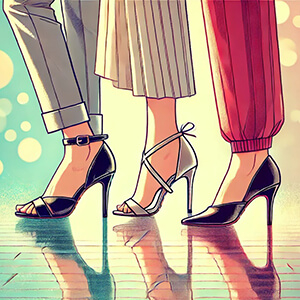
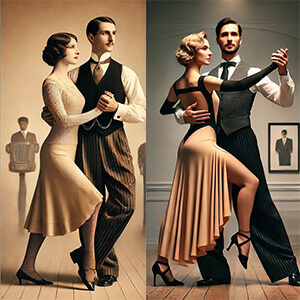
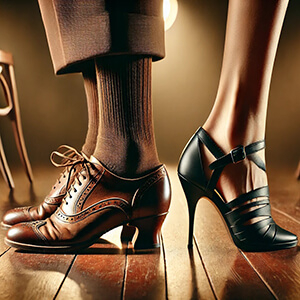
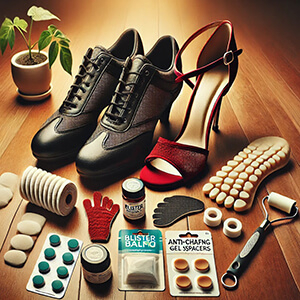
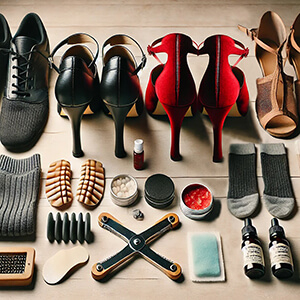
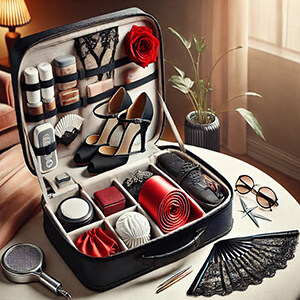
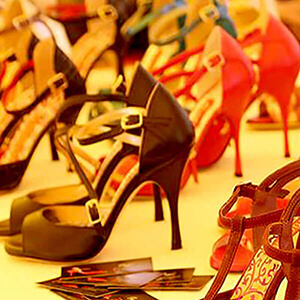
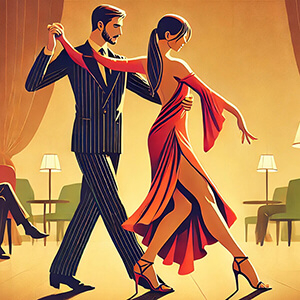
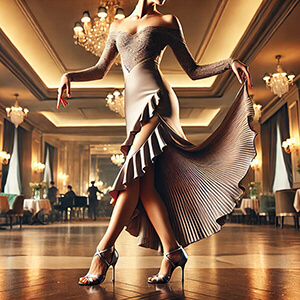
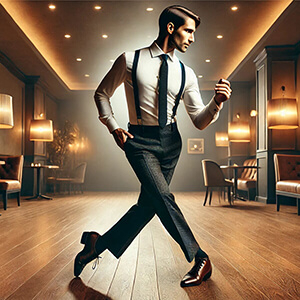
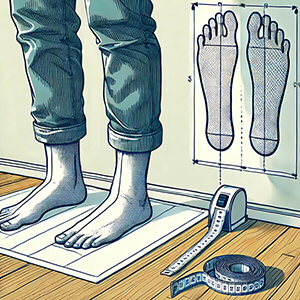
Leave a comment